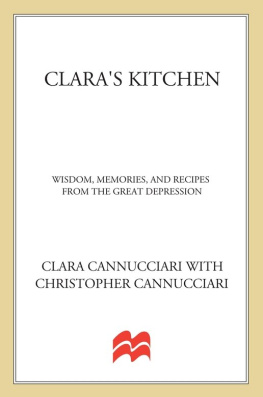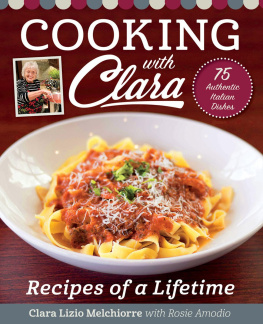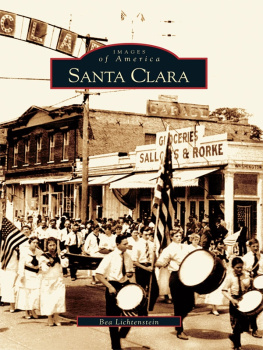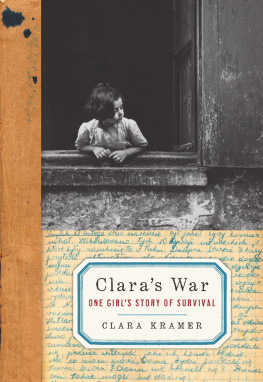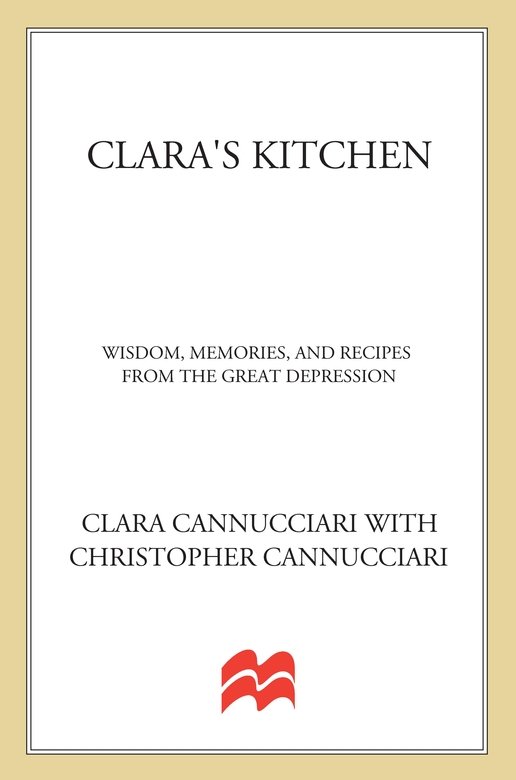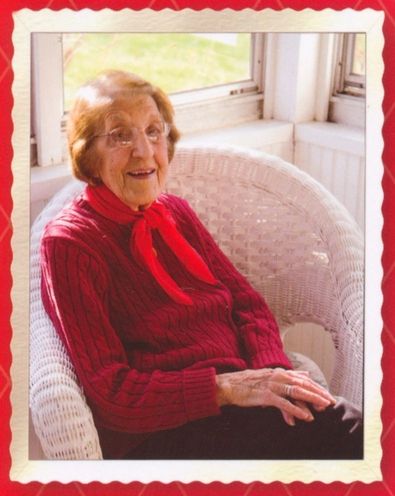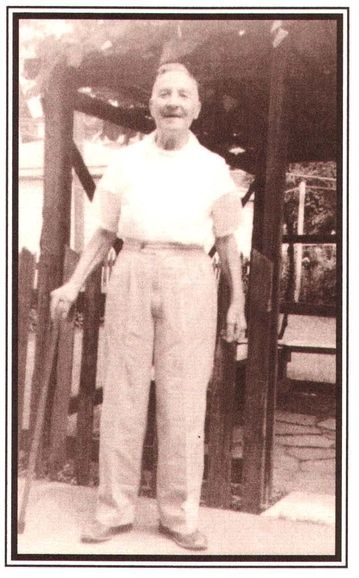Clara and Christopher would like to thank the whole Cannucciari family: Nancy, Therese, John-Paul, Mark, Patrick, Henry, Carl, and Kyoko. A special thanks to Abby Cope for capturing the meals with loving care. Clara would also like to thank her brother, Sam, and everyone back at Melrose Park who remembers the old neighborhood, plus a big thanks to all of our friends in Skaneateles, New York.
This book would not have been possible without the hard work and magic of Francine LaSala, and the guidance of Sharon Bowers. We are especially grateful to Michael Flamini and everyone at St. Martins Press for their strong vision and love of all things Clara.
Most of all we would like to thank everyone who has taken the time to watch Claras videos. Without your support Claras recipes might have disappeared and her stories faded away. Thank you for seeing the importance of keeping these simple meals and wisdom alive. We hope that you will pass these recipes on through the generations of your own families.
Clara Cannucciari is ninety-four years old and lives in Skaneateles, New York. Her grandson Christopher Cannucciari is a filmmaker who lives in Brooklyn. His latest film is New Brooklyn .
Jacket design by MICHAEL STORRINGS
www.stmartins.com
St. Martins Press 175 FIFTH AVENUE, NEW YORK, N.Y. 10010
DISTRIBUTED IN CANADA BY H. B. FENN AND COMPANY, LTD. PRINTED IN THE UNITED STATES Of AMERICA
Goods from the Garden and Found Foods
E SPECIALLY IN THE LEAN YEARS of the Depression, we lived on vegetables and, and it kept us plenty strong and healthy for all the hard work at hand. Meat was a treat, but vegetables were our staples.
When I was a kid, my father kept a garden in the backyard, which we helped him keep up, and my mother would take the vegetables we grew and make them into all kinds of meals. Not just side dishes like you would today. The vegetables, made with pasta or on their own, were the main event. Meat was too hard to come by most of the time. We had to stretch out whatever we had for as long as we could, so whatever we couldnt eat, my mother would can and preserve for winter. Sometimes wed eat stuff that grew wild,like burdock and dandelions and mushrooms. Wed find it, and Ma would clean and cook it.
My father would plant vegetables all summer. Ma would take out the seeds, dry them out, and then my father would plant them again. And thats how we kept our garden growing. Whatever was left over, my mother would can. We ate really well in the Depression, and throughout the year, because of that. Here are some of my favorite recipes Ma made with the vegetables we grew.
Serves 4
ITS EASY TO FORGET about nutrition when your pockets are empty, but where theres dirt, theres foodhealthy, nutritious food. Back in the Depression, lots of people grew gardens to eat from, including us. Some people would grow gardens in the summer and then go through the streets and try and sell their stuff. Buying someone elses vegetables was too expensive for us, but we still needed to eat.
A couple of times, my father stood in line for food the government supplied, but he hated it. He was very proud and self-reliant, and he would rather go without than take handouts. I think he went twice and then never again. Instead, my father took matters into his own hands and kept a great big garden in our backyard. He grew just about everything there. Carrots, escarole, spinach, asparagus, radishes, beans, eggplant, peppers, Swiss chard, you name it. We ate so healthy with all those vegetables and we werent even trying. And we worked hard helping him keep that garden in shape. No wonder we all live so longmy brother and I are both healthy and strong and in our nineties!
Swiss chard was good, but it was always a little bitter for me, so Ma would always add some garlic to give it a little extra something. You can toss this over pasta or serve it as a side for a meat dish.
You will need
1 bunch Swiss chard
1 tablespoon olive oil
1 clove garlic, minced
Salt and pepper
1. Bring a large pot of water to the boil.
2. Thoroughly rinse the Swiss chard, removing most of the tough stems (but leave some if they look like they will be tender).
3. Add the Swiss chard to the pot. Boil 5 minutes, then drain and set aside. When its cool enough to handle, squeeze it between your hands to get all the extra water out of the chard.

